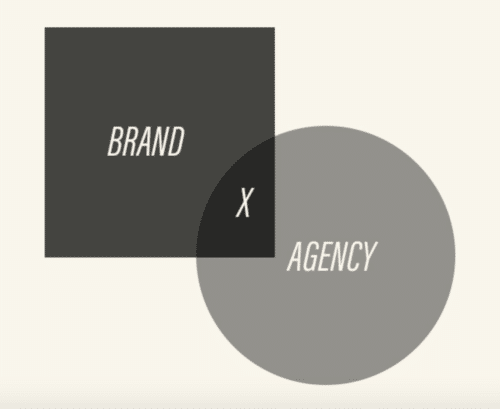October 10, 2019
How to get the best results from collaboration with your agency

Agency humor loves biting the hand that feeds it, framing life as an endless war between clients and creative. There’s a grain of truth in that, but we prefer to think of it as a necessary part of the creative process. Creativity is born of tension, and when two parties agree 100%, one of them is unnecessary. Here are our 4 tips for getting the most out of a creative collaboration.
BE CLEAR ABOUT TARGETING
Vagueness is the enemy of collaboration. Consider it Murphy’s Law – any touchpoint with room for interpretation tends to become a point of contention down the road. And targeting is the first place that this vagueness tends to seep in. Brands generally have a clear sense of what their KPI’s are (generally sales, lower CPA’s, increased awareness), but can tend to be vague on HOW this will happen. Go a step deeper beyond blanket demos, if you’re targeting women 27-39 (a demographic that includes both Paris Hilton and Alexandra Ocasio-Cortez), think about the type of women, personality, or interest you’d like to target. Increased specificity sharpens brands and attracts fans. The worst thing in the world is a pleasant ad that is generally inoffensive to everyone and converts no one.
READ THE BRIEF, THEN CUT IT DOWN BY 25%
In a sense, brand stakeholders are the worst people in the world to look over a brief, because they’re the world’s leading expert on the product. When the brief comes back, there’s a tendency to rubber stamp it – does it roughly conform to the meeting notes from the kickoff? Okay, good. Ideally, the brief should be a time of scaling down. Every brand and product will have dozens of value props, brand guidelines, and potential angles of attack. It’s tempting to include them all, but that tends to muddy the message. Demand focus here – the more restrictions you put on the creative team, the more focused and creative a result you’ll get.
GIVE NOTES STRATEGICALLY, EMPATHETICALLY
The best notes are actionable. Cut this by 10%. Omit flowery language. Cut this line. Include a line that speaks to value prop X. If you’re having trouble doing that, it’s probably worth touching base with your account person on a phone call to get everyone aligned on the same page.
If a creative choice seems resistant to notes, the best question to ask is “why is this there?” There’s a stereotype that all creatives are frustrated artists, trying to insert whimsy, product be damned–but most choices come down to results. The ad agency has a vested interest in your spot performing, and has a corresponding fear of a brand-side tendency to dull things down past the point of effectiveness. Communicating your goals and fears honestly helps align both sides on the only thing that matters: an effective spot.
TAKE NOTES DURING PRODUCTION
Production days have a tendency to feel like a grown up summer camp. The spectacle, the cast, the crew, the show biz magic of seeing abstract ideas come to concrete, photographable reality. It’s really helpful to take notes on your favorite takes, and communicate that to the script. There’s nothing worse than trying to recall a half-remembered good read two months later in editing. Take notes about everything you like on the monitor, as it helps to keep a record of what you liked the first you saw a take (when there was enthusiasm and novelty) when you’re seeing it for the umpteenth time in the umpteenth cut, and the enthusiasm is long gone.
